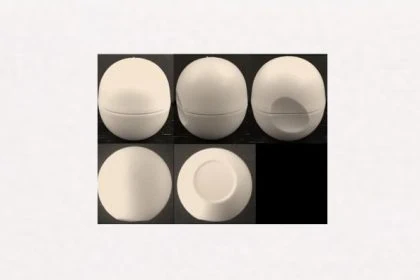The ECJ had laid down principles for establishing bad faith in an EU trade mark application in 2009 with the Lindt/Sprüngli judgment and in 2019 with the ‘KOTON’ decision. Now the CFI applied these principles: trade mark bad faith in practice in case law ‘Agate’.
 Again and again, the accusation of bad faith is also raised in trademark disputes. This not only promotes damage to the defendant’s image – because he is accused of dishonest, reprehensible behavior – but it is rather a trademark law term (see “bad faith” in Art. 52(1)(b) of Regulation No. 207/2009), which, however, is not easy to overlook or prove.
Again and again, the accusation of bad faith is also raised in trademark disputes. This not only promotes damage to the defendant’s image – because he is accused of dishonest, reprehensible behavior – but it is rather a trademark law term (see “bad faith” in Art. 52(1)(b) of Regulation No. 207/2009), which, however, is not easy to overlook or prove.
ECJ case law on ‘bad faith’
In the Lindt & Sprüngli ruling on the Lindt Gold Bunny, the ECJ had already issued a leading judgment on bad faith in 2009. In the ECJ’s KOTON decision of 2019, these principles were also elaborated upon. Accordingly, the intention of the applicant at the time of filing the application is to be seen as a subjective element which must be determined on the basis of the objective circumstances of the case. An overall assessment of all circumstances must always be made.
Significant objective factors are:
- Did the applicant know or should he have known that his EU trade mark is very similar to another?
- Is the younger trade mark applied for only to prevent third parties from entering the market?
- What degree of protection do the conflicting marks enjoy?
The time period also plays a role; if the earlier trade mark has been established in the market for a long time – often as a well-known product trade mark – it is more likely that unfair competition and unfair exploitation of trade mark reputation is being pursued with the more recent trade mark application. This may be an indication of bad faith, but it is not necessarily so, the ECJ explained, because the trade mark applicant may also pursue a legitimate aim in such a case.
Finally, the nature of the trade mark applied for must also be taken into account. In the case that the sign in question consists of the overall shape and presentation of a product, bad faith on the part of the applicant would be easier to establish, according to ECJ explained.
Bad faith even without likelihood of confusion!
Above all, however, the ECJ concretised two aspects in its ‘bad faith’ leading judgments:
For an application for a declaration of invalidity on grounds of ‘bad faith’, it is by no means necessary that the applicant is the proprietor of an earlier trade mark for the same or similar goods or services. Most importantly, according to the ECJ, bad faith can exist even if there is no evidence of a likelihood of confusion between the marks in dispute.
The case ‘Agate’, which has now been decided before the European Court of Justice (Court of First Instance, CFI), dealt with bad faith under trade mark law in case-law ‘A.
Bad faith in case-law ‘Agate’
The applicant, Univers Agro Ltd (Bulgaria), had registered the EU trade mark ‘Agate’ for “car tyres [tyres]” in 2017. Against this trade mark registration, the intervener, Shandong Hengfeng Rubber & Plastic Co Ltd. (China) filed an application for a declaration of invalidity, relying on its own earlier Chinese figurative mark containing the word element ‘Agate’, which is used in the course of trade in Bulgaria for tyres in Class 12.
The Cancellation Division and the Board of Appeal of EUIPO upheld the Chinese intervener. It had succeeded in proving that the contested mark had been applied for in bad faith within the meaning of those provisions, since that mark had been applied for with the aim of exploiting the lack of formal protection of the intervener’s mark in Bulgaria by coupling its customers and the market share created by its business partner and distributor, Omnifak Ltd. Indeed, the Bulgarian applicant’s EU trade mark was used for an application for coercive measures against the Chinese intervener only 14 days after registration and also as the basis for an infringement action against the distributor Omnifak.
Bulgarian Univers Agro brought an action against this decision before the European Court of Justice (CFI).
Knowledge of the Chinese mark in the Bulgarian market?
It cannot be assumed that it could have had knowledge of the use of the Chinese mark in Bulgaria, Univers Agro argued – the number of tyres sold by Omnifak under the AGATE brand in the period 2014 to 2017 was less than 0.06% of the total number of tyres imported into Bulgaria annually. The Board of Appeal committed an error of assessment in this respect.
However, to no avail, the CFI rejected this plea. The applicant had not shown in any way, nor been able to cite any specific event, that it only became aware of the use of the Chinese trade mark Agate in Bulgaria after its trade mark application. Instead, it had initiated the measures against the intervener in a conspicuously short period of time, the CFI found.
Intentions at the time of the trade mark application
The second plea, alleging an error of assessment in relation to the applicant’s intentions at the time of filing the contested trade mark application, was also unsuccessful before the CFI. In vain, the applicant argued that factors and circumstances had been taken into account which should not have been taken into account under the ECJ’s guiding principles on bad faith – and, on the other hand, that an important circumstance had not been taken into account.
The applicant argued that the intervener had no interest in the EU market and that its sole aim was to exclude it from that market. According to its research, the intervener had filed at least 90 applications for at least eight different trade marks for goods in class 12 in different countries since 2009. All of those marks were filed in Bulgaria and in the European Union, although the intervener had not filed an application for the Agate mark in Bulgaria before the contested mark was registered.
The CFI nevertheless rejected this plea. Decisive is that the applicant did not manage to challenge the intervener’s evidence of use of the Chinese trade mark Agate in Bulgaria.
The CFI therefore dismissed the Bulgarian trade mark applicant’s claim in its entirety.
Would you also like to protect or defend a trade mark?
Our lawyers have many years of expertise in trade mark law and competition law as well as in the entire field of intellectual property law and are entitled to represent you before any court – in Germany and also internationally.
Please contact us if you are looking for support.

Sources:
ECJ Bad faith in Lindt Spüngli (2009, C:2009:361)
ECJ Bad faith in KOTON (2019, C:2019:724)
CFI Bad faith in ‘Agate’, (29. September 2021, EU:T:2021:633)
Image:







Leave a Reply